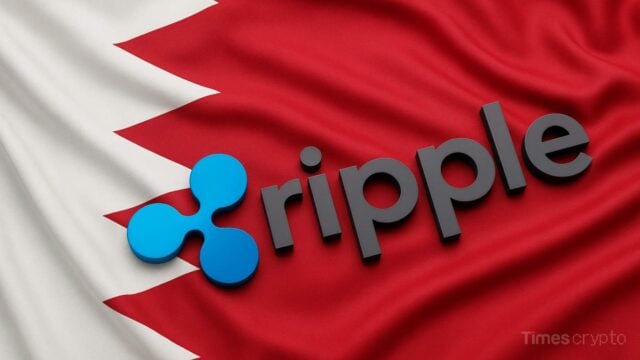Key Takeaways
- Major lenders including Bank of America, Deutsche Bank, Goldman Sachs, and UBS have joined forces to assess the viability of issuing a stablecoin pegged to G7 currencies, marking a coordinated push by traditional finance into blockchain-based money.
- A separate nine-bank consortium led by ING and UniCredit is developing a euro-denominated stablecoin under the EU’s MiCA framework, highlighting Europe’s first-mover advantage in regulated digital assets.
- With Standard Chartered warning that as much as $1 trillion could move from emerging market bank deposits into stablecoins by 2028, traditional lenders are stepping up their digital strategies.
- Regulation remains a patchwork. The EU’s MiCA framework, the U.S. GENIUS Act, and new regimes in the UK, Singapore, and Hong Kong each take different approaches to oversight.
A group of leading global banks is joining forces to explore the creation of a stablecoin pegged to major G7 currencies, as traditional finance deepens its push into blockchain-based infrastructure.
According to Reuters, ten financial institutions are participating in the initiative, including Bank of America, Deutsche Bank, Goldman Sachs, UBS, Citi, MUFG, Barclays, TD Bank, Santander, and BNP Paribas.
The banks aim to assess whether blockchain-issued assets, pegged 1:1 to sovereign currencies, can enhance financial efficiency and competition without compromising compliance or risk controls, according to a joint statement released Friday.
“The objective of the initiative is to explore whether a new industry-wide offering could bring the benefits of digital assets and enhance competition across the market, while ensuring full compliance with regulatory requirements and best practice risk management,” the banks said.
Parallel Euro Initiative Gains Ground
In a separate push to bring regulated digital assets into the financial mainstream, in September, a consortium of nine European banks has formed a new company in the Netherlands to develop a euro-denominated stablecoin, aiming for launch in the second half of 2026.
The venture, backed by major institutions including ING, UniCredit, CaixaBank, Danske Bank, and KBC, plans to issue the stablecoin under an e-money license regulated by the Dutch central bank and fully aligned with the EU’s Markets in Crypto Assets (MiCA) framework.
The group says the project is designed to enhance European financial sovereignty and payment infrastructure by enabling instant, low-cost cross-border transactions using a tokenized, euro-backed asset.
While euro stablecoins currently account for a small fraction of the global market, dominated by U.S. dollar equivalents, the initiative reflects growing interest in building euro-native digital payment rails amid regulatory uncertainty and limited private-sector competition.
$1 Trillion Wake-Up Call: The Stablecoin Shift Banks Can’t Ignore
These moves come as traditional lenders increasingly recognize the risks of being sidelined in a financial system gradually shifting toward blockchain-based alternatives.
Recent research from Standard Chartered underscores the urgency. The bank forecasts that as much as $1 trillion could exit emerging market banking systems and flow into stablecoins within the next three years, driven by demand for digital dollars in regions facing inflation, currency instability, and capital controls.
According to the report, individuals and businesses in such economies are increasingly turning to stablecoins as a more reliable, accessible store of value—one that sidesteps the constraints of local banking systems.
By launching their own regulated stablecoin initiatives, banks are not only safeguarding against the erosion of their deposit base but also positioning themselves to shape the future of digital finance.
These initiatives allow traditional institutions to remain central to cross-border payment flows, offer compliant alternatives to crypto-native issuers, and ensure that digital liquidity remains anchored to the established banking system. In doing so, banks can maintain relevance in a world where programmable money, instant settlement, and decentralized financial tools are rapidly becoming the new normal.
Regulatory Challenges & Divergence Across Jurisdictions
The global rule-book for stablecoins remains uneven, shaping how banks design, license, and roll out their digital asset projects. While enthusiasm for blockchain-based finance has accelerated, the absence of a unified international framework has left regulators and institutions working within a tangle of differing standards, oversight models, and risk controls.
Europe has moved ahead with the EU’s Markets in Crypto-Assets Regulation (MiCA), whose provisions for asset-referenced and e-money tokens took effect in late 2024.
MiCA establishes clear standards for reserve management, redemption at par value, transparency, and ongoing supervision, which are requirements that have encouraged European lenders to take the lead.
The United States, meanwhile, now has its first federal framework for payment stablecoins. The GENIUS Act, signed into law in July 2025, mandates that issuers maintain one-to-one reserves in high-quality liquid assets such as cash and short-term U.S. government securities, while imposing consumer protection and supervisory standards to ensure transparency and solvency.
Elsewhere, the United Kingdom is finalizing its own regime. The Financial Conduct Authority’s consultation on stablecoin issuance and safeguarding rules, alongside the Bank of England’s oversight of systemic payment systems, aims to integrate stablecoins into the broader post-Brexit financial services framework.
Meanwhile, Singapore’s Monetary Authority has already enacted its fiat-backed stablecoin rules, requiring full reserves, robust custody, and redemption at par within five business days.
Hong Kong followed suit in August 2025, introducing a licensing regime for fiat-referenced stablecoin issuers and publishing detailed supervision and anti-money-laundering guidelines.
For global banks, this divergence represents both a challenge and an opening. Varying authorization paths, reserve rules, and disclosure standards add compliance complexity, but early movers have a chance to shape how cross-border standards develop.
By acting now, banks can help define the infrastructure for digital money flows across jurisdictions, ensuring they remain central to the next phase of financial globalization.
Read More: Ripple Deepens Middle East Ties with Bahrain Partnership, Eyes RLUSD Expansion







